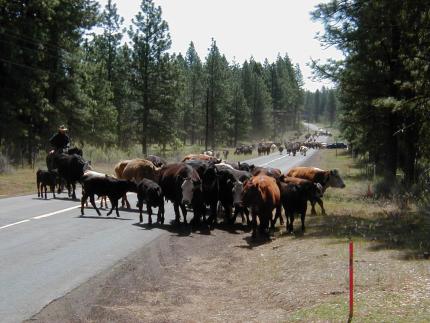
Ranching has an essential role in the makeup of many communities throughout Washington, providing benefits for local livestock producers and residents all over the state. The department works hard to maintain a working landscape on our wildlife areas consistent with local community sentiment, as long as ecological integrity persists on the land.
The WDFW Fish and Wildlife Commission’s policy is that livestock grazing on WDFW-owned or controlled lands may be permitted if determined to be consistent with the desired ecological conditions for those lands, or with the department’s Strategic Plan. If permitted, grazing is integrated with other uses to ensure the protection of all resource values, the most important being the integrity of the ecosystem.
Each grazing permit includes its own specific grazing management plan which is developed in cooperation with the operator. These management plans include protective measures, livestock producer responsibilities, and a monitoring plan to measure compliance with conditions of the permit.
WDFW uses livestock grazing as a tool for managing habitats and participate in landscape-level land uses that favor maintenance of open space. Closely managed and monitored livestock grazing can offer benefits for game animal populations. It can increase shrub growth, which is a critical source of food for deer in eastern Washington, and elk often prefer areas grazed early in the year where the result is nutritious new growth. Grazing can also help control the height of tall, invasive plants like Reed canary grass, making wetlands more attractive to waterfowl and shorebirds.
You can learn more about how WDFW manages grazing by reading through the department's grazing story map, which features an overview of the permitting process and interviews with Washington stakeholders on how grazing contributes to landscapes, wildlife, and communities.
-
Grazing Program guidance and tools
Review the department's grazing program guidance and tools document.